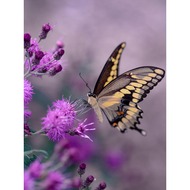Stream Study: What Do Stream Organisms Tell Us?
(View Complete Item Description)Watershed Awareness using Technology and Environmental Research for Sustainability (WATERS) The WATERS project is developing and researching a student-centered, place-based, and accessible curriculum for teaching watershed concepts and water career awareness for students in the middle grades. This 10-lesson unit includes online, classroom, and field activities. Students use a professional-grade online GIS modeling resource, simulations, sensors, and other interactive resources to collect environmental data and analyze their local watershed issues. The WATERS project is paving a path to increased access to research-based, open access curricula that hold the potential to significantly increase awareness of and engagement with watershed concepts and career pathways in learners nationwide. This material is licensed under a Creative Commons Attribution 4.0 License. The software is licensed under Simplified BSD, MIT or Apache 2.0 licenses. Please provide attribution to the Concord Consortium and the URL https://concord.org.
Material Type: Activity/Lab, Lesson




















